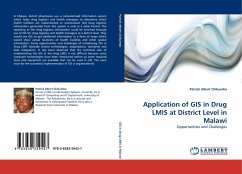In Malawi, district pharmacies use a computerised information system which helps drug logistics and health managers to determine which health facilities are understocked or overstocked. But drug logistics information generated from this system is only in a table format. The reporting of the drug logistics information could be enriched through use of GIS for drug logistics and health managers at a district level. They would use GIS to get additional information in a form of maps which would show actual locations of health facilities and other spatial information. Some opportunities and challenges of introducing GIS in Drug LMIS basically involve technologies, organisation, standards and data integration. It has been observed that the technical side of implementing the GIS in the drug LMIS is not difficult because some computer technologies have been introduced before so some required tools and equipment are available that can be used in GIS. The main issue for the successful implementation of GIS is organisational.







